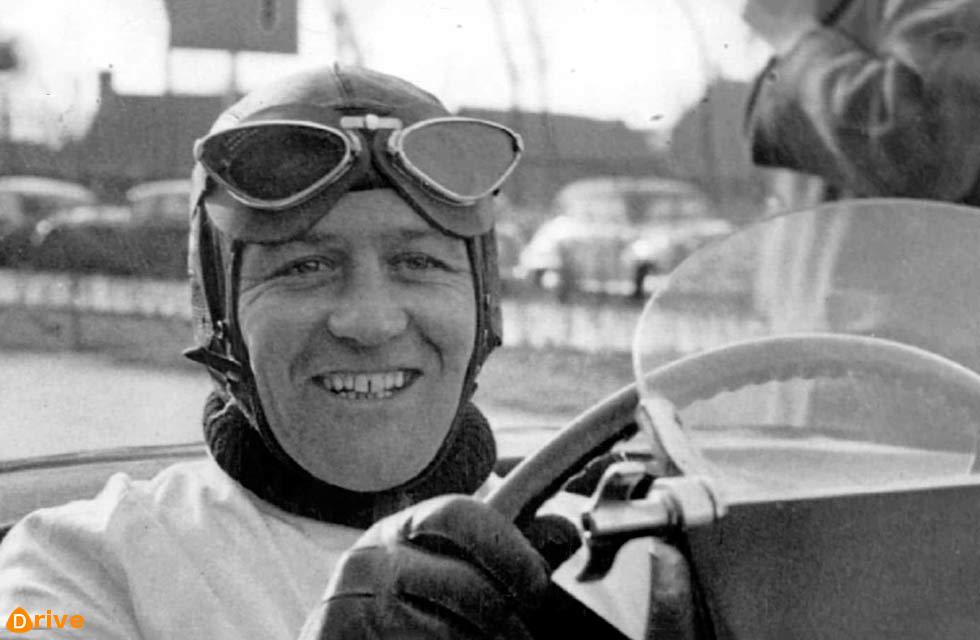Norman Dewis Obe, Jaguar’s legendary test driver between 1952 and 1985, has passed away aged 98. Over a 33-year career at Jaguar, Dewis helped to develop some of the company’s most iconic cars, from the D-type to the XJ-S, and the Mk X to the XJ40. “Norman’s name will quite rightly go down in Jaguar history,” said JLR CEO, Dr Ralf Speth. “Without his contribution to the brand during his 33-year career, or as a global ambassador in his later years, Jaguar just wouldn’t be the same.”
OBITUARY NORMAN DEWIS OBE 3 AUGUST 1920 – 8 JUNE 2019
Born in Coventry on 3 August 1920, Norman’s career with cars began aged 14, fitting wings and bonnets at the Humber factory. At 15, he moved to the car manufacturer Armstrong Siddeley, where he spent time in the chassis department and learned to drive while taking cars on their shakedown runs. During wartime, Dewis was drafted into the RAF, working the gun turret of a Blenheim bomber. After a post-war job at Lea-Francis as chief test engineer, Norman joined Jaguar in 1952.

Dewis’ history with Jaguar is remarkable: he developed the multiple Le Mans-winning C- and D-type racing cars, the classic XK 140 and 150 sports cars, the pioneering 2.4/3.4 and Mk 2 saloons, the Mk VII and Mk VIIM models, the legendary E-type (including the Lightweight racing versions), the XJ13 mid-engined prototype (which he famously crashed in January 1971), the world-class XJ saloon, the XJ-S and the XJ40. Each and every car developed with Dewis’ input remains an icon of the automotive world to this day for its impeccable blend of comfort and handling.
Unusually, Norman reported directly to Jaguar’s chief engineer, William Heynes.
This arrangement was probably unique in the motor industry for a test engineer, and it enabled the company’s chief engineer (later engineering director) to receive instant, first-hand feedback on the proving process. Norman also sent copies of his reports to company founder Sir William Lyons. Both placed considerable store in everything Norman said.
Alongside the development of cars, one of Dewis7 other projects was without doubt one of the most important in the automotive industry: the disc brake. Dewis became involved with Jaguar and Dunlop’s development of the revolutionary braking system not long after joining, famously trialling the system in a C-type at the 1952 Mille Miglia with Sir Stirling Moss in the driving seat.
Norman’s own skill behind the wheel was especially highlighted in 1953, when he set a new production car speed record of 172.412mph in a modified XK 120 on a closed section of the Belgian highway near Jabbeke. And again in 1955, when he drove a works D-type in the dramatic Le Mans 24 Hours race, reaching more than 190mph in his quest to overtake the Mercedes-Benz 300SLR of Karl Kling.
The famous racing driver Mike Hawthorn had such faith in Dewis that when he was asked to attend a test session, and saw that Dewis was already there, he asked the team manager, “Why am I here? If Norman’s satisfied with it, I’m satisfied.”
Dewis is also famous for his legendary nighttime dash from Coventry to the Geneva Motor Show in 1961 for the launch of the Jaguar E-type. Covering roughly 700 miles in an E-type sourced from the factory for press demonstration runs, Dewis arrived roughly 15 hours later having not stopped once (aside from fuel) – hugely impressive at a time when there were no motorways.
In later years, Norman built up a small but highly dedicated vehicle-proving department, which he headed until his retirement in 1985. He also oversaw the establishment of a dedicated Jaguar test facility at Nardo, Italy, and a major base at Phoenix, Arizona, for durability and environmental testing in the all-important United States market, in 1984.
In retirement, Dewis became an ambassador for Jaguar, appearing at events around the world in his distinctive bootlace tie and cowboy boots. At the 2014 Goodwood Revival, Dewis – then aged 93 – demonstrated a D-type, his speed illustrating that he hadn’t lost his touch behind the wheel.
Dewis then consulted with Jaguar Classic Works on the launch of the continuation Lightweight E-type, a car that he originally helped to develop in the Sixties.
In recognition of his services to Jaguar and the British motor industry, Norman received the Order of the British Empire (OBE) in 2015.
Everyone here at Jaguar World would like to pass their condolences to Norman’s family.







